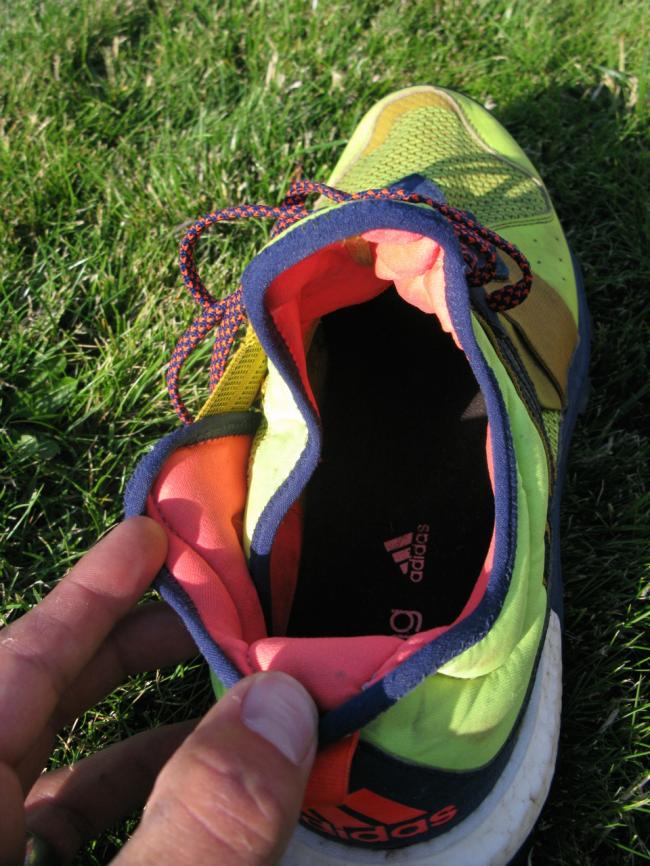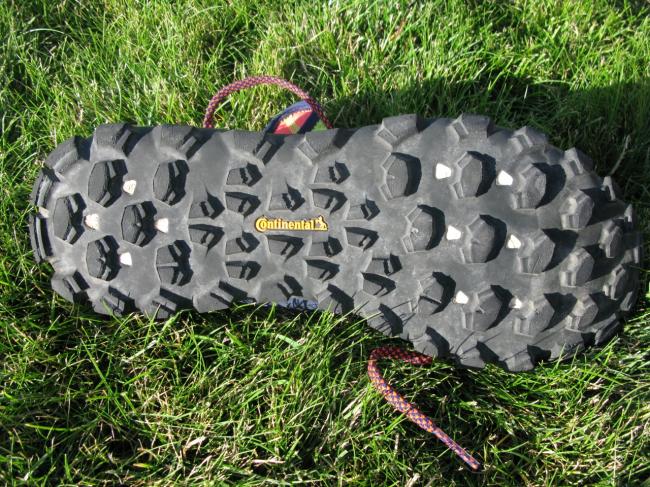 When I first saw the new Boost trail shoes that were set to release this summer, I automatically assumed the XT Boost would be my favorite and the Raven Boost would be an interesting option for longer outings. I really thought the Response Trail Boost would not run well and wasn’t that interested other than out of curiosity and that I liked the look of the outsole. After receiving all three for review and starting to get miles in them I came away with a much different take. I came away surprisingly liking the Response Trail Boost much more than I expected to. Read on to find out why.
When I first saw the new Boost trail shoes that were set to release this summer, I automatically assumed the XT Boost would be my favorite and the Raven Boost would be an interesting option for longer outings. I really thought the Response Trail Boost would not run well and wasn’t that interested other than out of curiosity and that I liked the look of the outsole. After receiving all three for review and starting to get miles in them I came away with a much different take. I came away surprisingly liking the Response Trail Boost much more than I expected to. Read on to find out why.
Disclaimer: The adidas Response Trail Boost was provided free of charge for review purposes by the manufacture. All opinions about the shoe are my own.
Specs
$110 MSRP; 415 g (14.6 oz) in my size 13; 326 g (11.5 oz) in size 9 and 10mm drop according to adidas.

Good fit for me overall with a medium-roomy fit throughout. Could be a little lower volume in the midfoot and lighter, more functional overlays, but still works pretty well.
Upper and Fit
The upper on the Response Boost is an interesting one. It definitely is an eye catcher and after first seeing the pictures of it I jokingly referred to it as using a mix of waterski boot design and seatbelt technology. I’m happy to report it functions and looks much better in person! It uses a soft padded material in heel and tongue and then employs a much more breathable mesh in the midfoot and toebox. The upper is entirely randed (overlay material where the upper meets the midsole) which adds security and durability. Additionally, the heel counter is very low as is the heel collar which, while still secure enough is very comfortable. I used the shoe sock less (like I do for nearly all my runs) on a 4+ hr mountain outing summiting Chief Joseph mountain in the Wallowa mountains of eastern Oregon which featured 5,500 ft gain in 4 miles (translation=steep). In addition this the Chief Joseph outing I also ran a 5 hr, 27 mile run the next week on flatter terrain and the Response Boost was equally comfortable on the relatively flatter, yet rocky, terrain. While the fit is not quite as precise as I’d ideally like, it is one of the more comfortable shoes I’ve run in and does not feel sloppy. It is noticeably wider than most other adidas shoes used and fits on the wider end of the medium fit spectrum of all shoes in the market. I think the biggest improvement I could recommend for the upper is in the overlays. While they provide a unique look, I think they are just plain overbuilt and the middle overlay that connects the other two, pretty much is useless in my opinion. In addition, I think the lace eyelets need to be attached differently/more securely. That said, it is still a really comfortable upper that doesn’t detract much from the rest of the shoe.

This frayed overlay was the only casualty on the upper, which could have been mostly the fault of my rugged route choice, but I feel also a result of the overlay design.
Ride
When I first received the shoes, I was worried that the ride would not be that great. Instead of using Boost full length like most of adidas’ road models, the Response Trail only has it in the heel and in a rectangular patch at the ball of the foot. In addition, the relatively higher weight heavily lugged led me to think the shoe would likely run heavy and unresponsive. I’m happy to report that it possesses neither of those two qualities and instead is forgiving generally, yet still responsive at higher speeds (especially nice on downhills) and as not tippy nor as clunky on more technical trail as it looks like it would be. I was quite surprised that the patches of Boost actually work better than the full length boost found in the Raven Boost. I think this confirms what many others have noted and I’ve found out myself: Boost is a fantastic material, but without thoughtful and supportive design elements it doesn’t create magic just by itself. For me the Ultra Boost road shoe and to a lesser extent the Raven Boost show that using more Boost is not necessarily better.

Boost in the heel which you can see. Boost in the forefoot that you can’t other than cutouts on outsole and if you lift the footbed up.
Outsole
The outsole on the Response Trail Boost is one of the best all purpose, yet heavily lugged outsoles I’ve used. I provides great traction on loose and rocky terrain, but still manages to run smoothly with plenty of float on dry and hard downhills. I didn’t expect this on a shoe with this much lug and trying to figure out how they pulled it off (my guess has to do with the lugs on the perimeter being rotated lengthwise rather than sideways like the middle lugs). It has nearly every characteristic I look for in an outsole: evenly spaced repeating lug pattern, full-length coverage, and quality black rubber. If there is any gripe, and this is minor, is the compound may be a tad soft for the type of shoe the Response is (heavier/training oriented). That said, the softness contributes to better grip on rocks and additionally, the wear I’ve seen may be more an indication of the terrain I covered, which was very rough/technical, than the outsole itself. I’ve literally ripped lugs completely off of other shoes in similar terrain. In short another hit from adidas on the outsole and this is true nearly across the board on the new Boost trail models.
Conclusion
The adidas Response Trail Boost really surprised me. It’s a shoe that gets the job done and has a unique look to go with it. I think there needs to be some refinement in the upper overlays while trying to retain the comfortable qualities of the upper, but the ride and outsole are really quite good and don’t need any tweaking for what this shoe is designed for. I thought that the Response might be the “budget” Boost trail model, but it turns out the lower price tag is no reason to not consider the Response Trail Boost and in the end is a big plus. I highly recommend the shoe for its versatility on the trails and comfortable fit. It is by far one of my favorites of the many shoes I’ve tried this summer.
Be sure to keep tuned to the blog for the reviews of the rest of the Boost Trail lineup (adizero XT Boost and Raven Boost) which should be up soon!
Any questions or comment about adidas trail models or the response in particular? Let me know below!





















I can’t help but sound like an adidas fanboy a bit because the response trail are the first pair of trail shoes I’m happy with. The comfort and protection is beyond all expectation.
Hi, i’m writing from Italy. I’m an Adidas fan. I’ve tried these shoes in an Adidas Shop. The number was a US 10.5. I felt quite confortable but the saleswoman advised me to choose the upper measure, US 11. My left foot (the longer one) is 28,3 cm long, sock included (sorry I don’t know in inches). US 11 seems to me enormous but the woman Warner me
warned me about the risk of blisters. I’d like to ask you how much room is advisable between the front end of the show and the first finger. Thank you.
That is a personal decision. I usually choose the size that is the smallest that I can and usually don’t have much more than 1 cm between my toe and front in of shoe. I find a closer fitting shoe to run much better all the way around and the Response TR Boost in particular is pretty soft on the feet as long as you can keep it secure on your foot (i.e. not too loose) it should be great on blisters (I don’t even use socks with them). I’d go with the smaller size personally. Hope that helps – David
Thanks!
Wow, like you…so many things that would scare me off of this shoe (high drop, heavy weight, complicated/over built) but you make it sound like it could work! I may have to try them..
We were talking about pointy shoes on another post and I noticed about the same time Boost came around, Adidas also seemed to go to a more pointy shoe than before.
I was a loyal Adidas guy for many years but than we had to break up awhile back lol I did try some Takumi Sen 3 recently but sent them right back..toe box was too tight for me and at that price I wanted perfection!.
The Adizero Sonic was probably my favorite “all around versatile shoe” especially the first two versions..I could run short, long, fast, any type of trail, road too..it was good everywhere and it was cheap too :-) only issue I ever had was a pretty good callous on bottom of foot (get that from Brooks shoes too)
I said it before, I still miss the Adiprene and the rounder toe boxes !
Can you run with these on pavement? Is it comfy as a daily casual all rounder?
They ride just fine on pavement, but the lugs are not designed to hold up to extensive road running so they will wear out quicker if you do a lot of road in them. A few miles here or there to get to some trails isn’t going to hurt them at all though and yes a very comfortable shoe that handles all kinds of runs well. Highly recommended! -David
Sorry but my experience with these shoes is extremely poor.
Two major issues
1) Very poor stability/squirm
2) Poor grip on hard surfaces
Both seem to be due to the very tall and widely spaced lugs.
The lugs are way over the top for a running shoe. They are more suited to a mud plugging trail boot. This leads to the shoe being unstable on irregular objects when the heel over angle becomes extreeme due to the enormously high stack.
I have never rolled an ankle but managed to do so on these shoes on technical terrain.
The tall and widely spaced lugs, whilst of an excellent compound squirm and slide on wet rock and squirm on dry rock reducing confidence immensely. It also makes sharp manouvres harder to effect on technical terrain.
Their comfort and protection on flat but stony trails are good. IF your trails are fire roads and you don’t need to turn, hop or manoeuvre these shoes may well be ok for you.
I believe they are not fit for purpose however and borderline dangerous in technical terrain
Thanks for sharing your experience. I do agree they aren’t specifically suited for technical terrain. The heel is too wide for sure and not as nimble as it could be if cut sharper and the upper could use a little more structure for more precision. However, the reason why I like them and still stand by my recommendation is that they run quite well for such a wide variety of surfaces (something very rare for a shoe with as much lug). If I was going to purpose build a shoe for technical terrain, then yes, this is not the shoe I’d make, but for a general all-purpose trail shoe, it is quite versatile and while not perfect on technical terrain, it is not horrible (better for me than something like the Pearl Izumi N2v2 and Nike Wildhorse 3 which are its closest competitors) and works well enough to get through sections like that on long runs or races that are for the most part less technical. -David
Are they good for bodyweight workouts as well, especially for high jump. I’m looking for something versatile for travelling.
They’d be fine for that I supposed…the heavily lugged outsole is probably not necessary but I do use them casually from time to time too. -David
I bought the adidas Response Trail Boost back in 2016
Where can i find it now Oct. 2020?
Thank you for the very informative review! I’m choosing between Response TR Boost and Adizero XT, also reviewed by you here. Which one of these two do you recommend, how do they compare? Greetings,